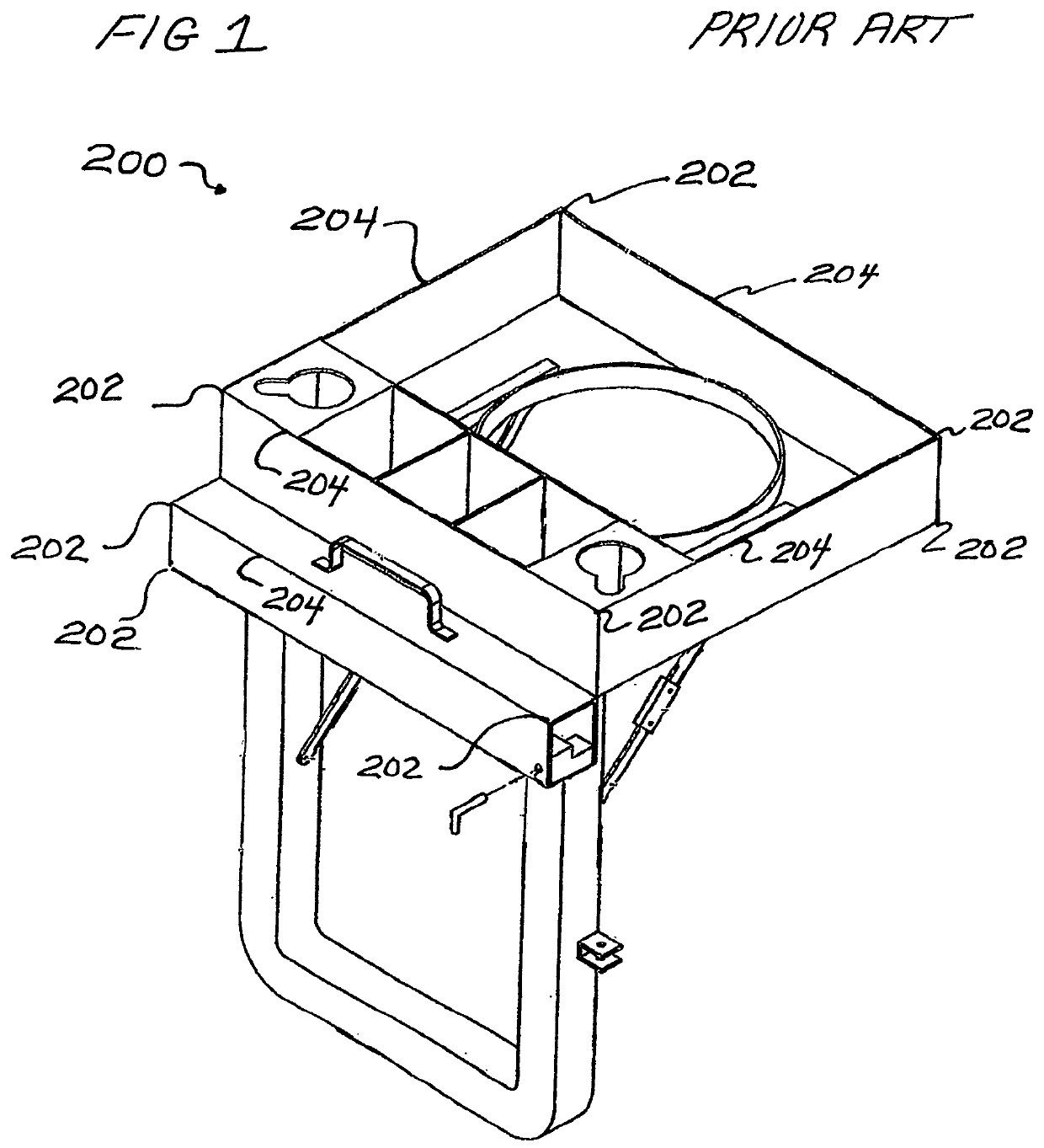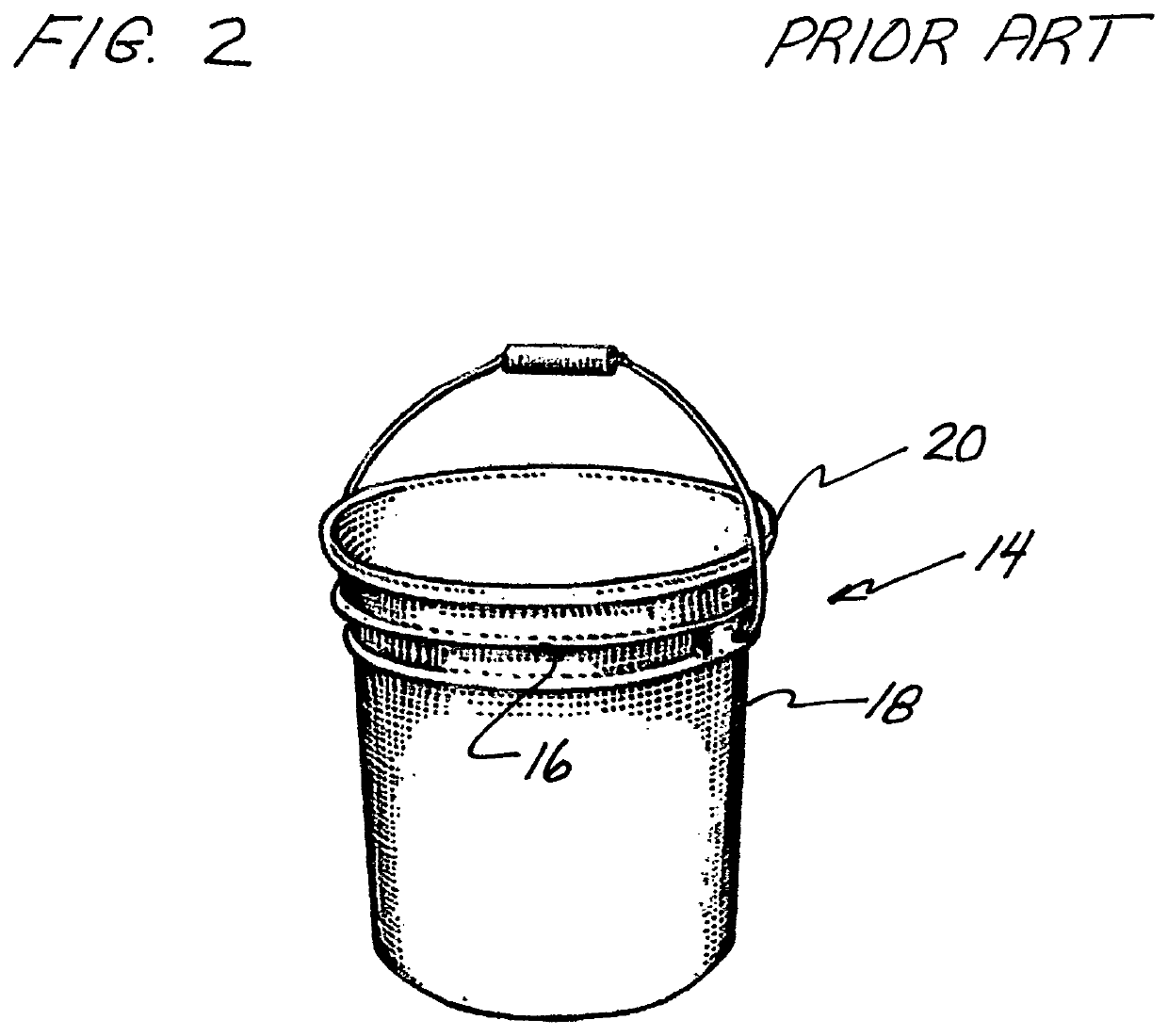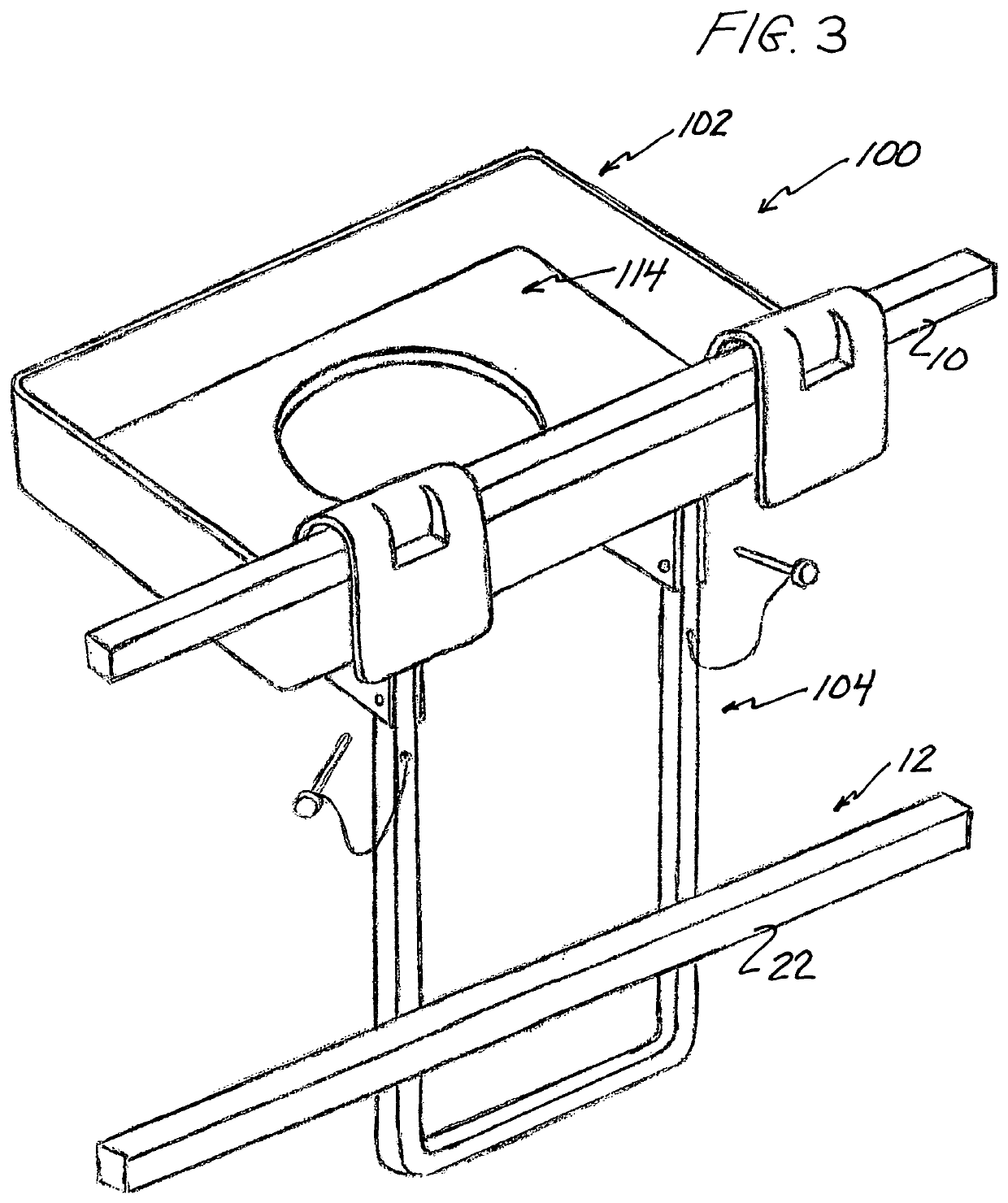Scaffold tool bucket holder
a bucket holder and tool technology, applied in the field of scaffold tool bucket holders, can solve the problems of limited work space, inconvenient and time-consuming for workers to climb down, and limited room for workers, so as to reduce or eliminate the risk of injury, easy to attach and remov
- Summary
- Abstract
- Description
- Claims
- Application Information
AI Technical Summary
Benefits of technology
Problems solved by technology
Method used
Image
Examples
Embodiment Construction
[0036]The scaffold tool bucket holder of the subject invention operates to be positioned on an upper rail of a scaffold for supporting a tool bucket used for holding a liquid, such as paint, or a plurality of tools. Preferably, the bucket is a conventional and commercially available bucket having about a three-gallon capacity to an about seven-gallon capacity with a cylindrical-shaped side wall which tapers slightly downward towards a bottom wall. The bucket typically includes at least one mid-level rib which extends horizontally around the side wall. The scaffold tool bucket holder when in position extends horizontally away from (outwardly) the scaffold so that it does not interfere with a worker walking along the length of the scaffold. It should be apparent the scaffold tool bucket holder can be positioned anywhere along the scaffold's length and that one or more scaffold tool bucket holders can be positioned on the same rail or different rails if desired. It should also be under...
PUM
 Login to View More
Login to View More Abstract
Description
Claims
Application Information
 Login to View More
Login to View More - R&D
- Intellectual Property
- Life Sciences
- Materials
- Tech Scout
- Unparalleled Data Quality
- Higher Quality Content
- 60% Fewer Hallucinations
Browse by: Latest US Patents, China's latest patents, Technical Efficacy Thesaurus, Application Domain, Technology Topic, Popular Technical Reports.
© 2025 PatSnap. All rights reserved.Legal|Privacy policy|Modern Slavery Act Transparency Statement|Sitemap|About US| Contact US: help@patsnap.com



